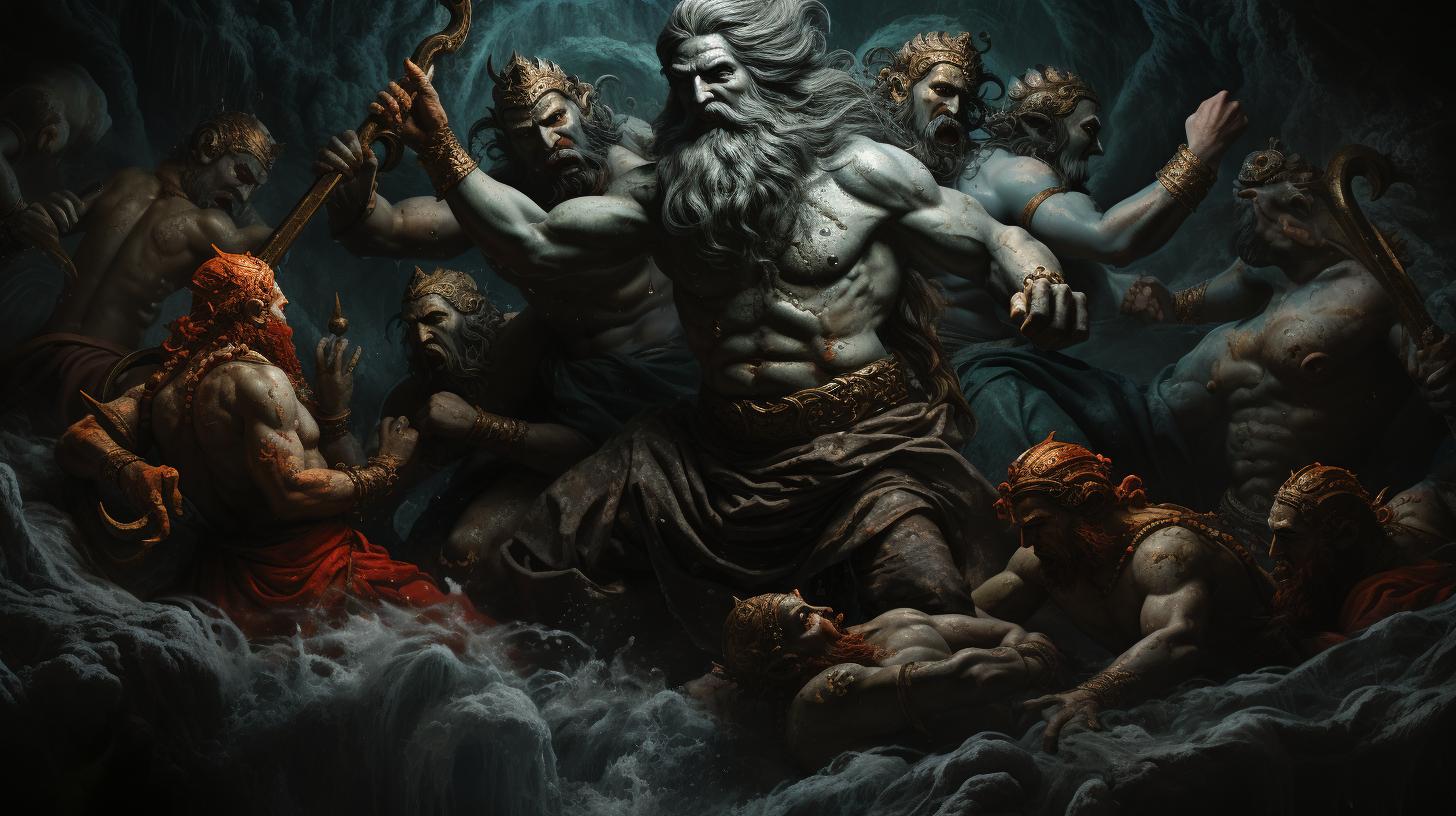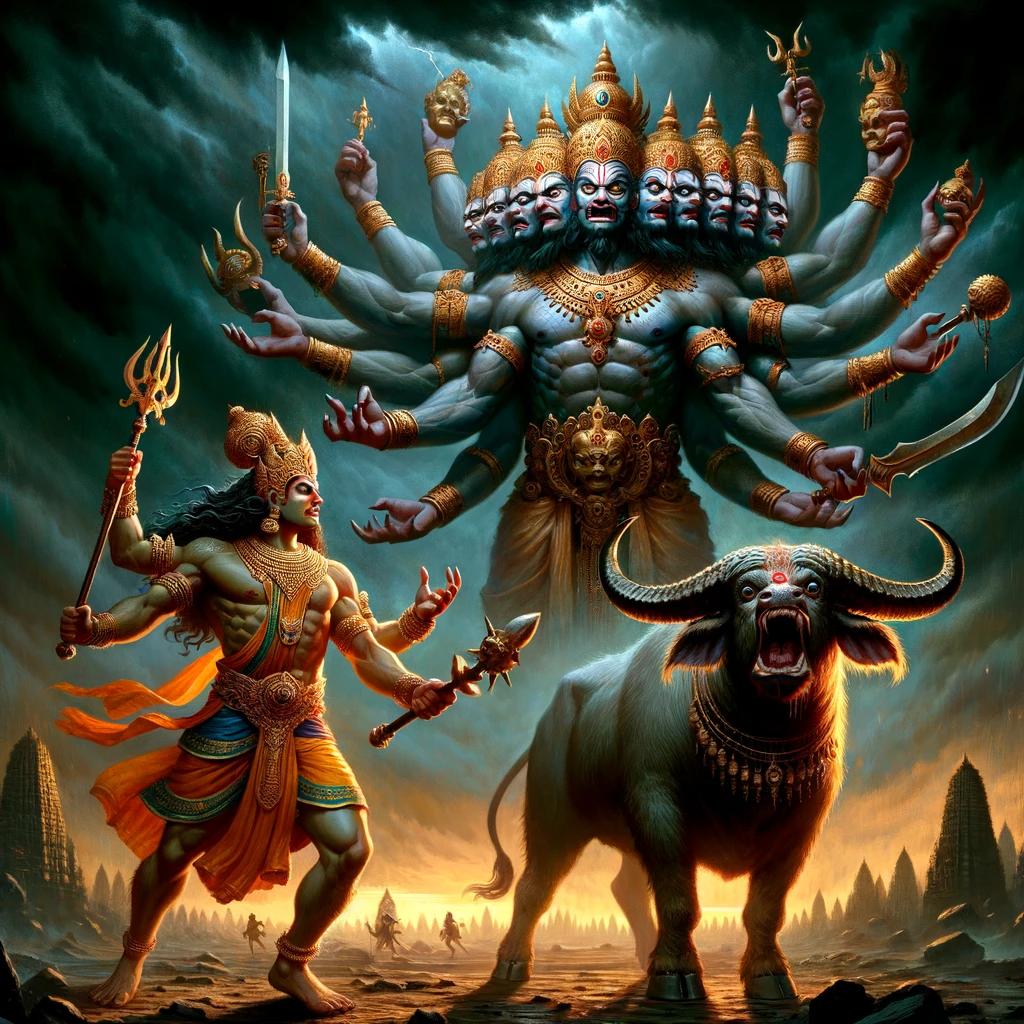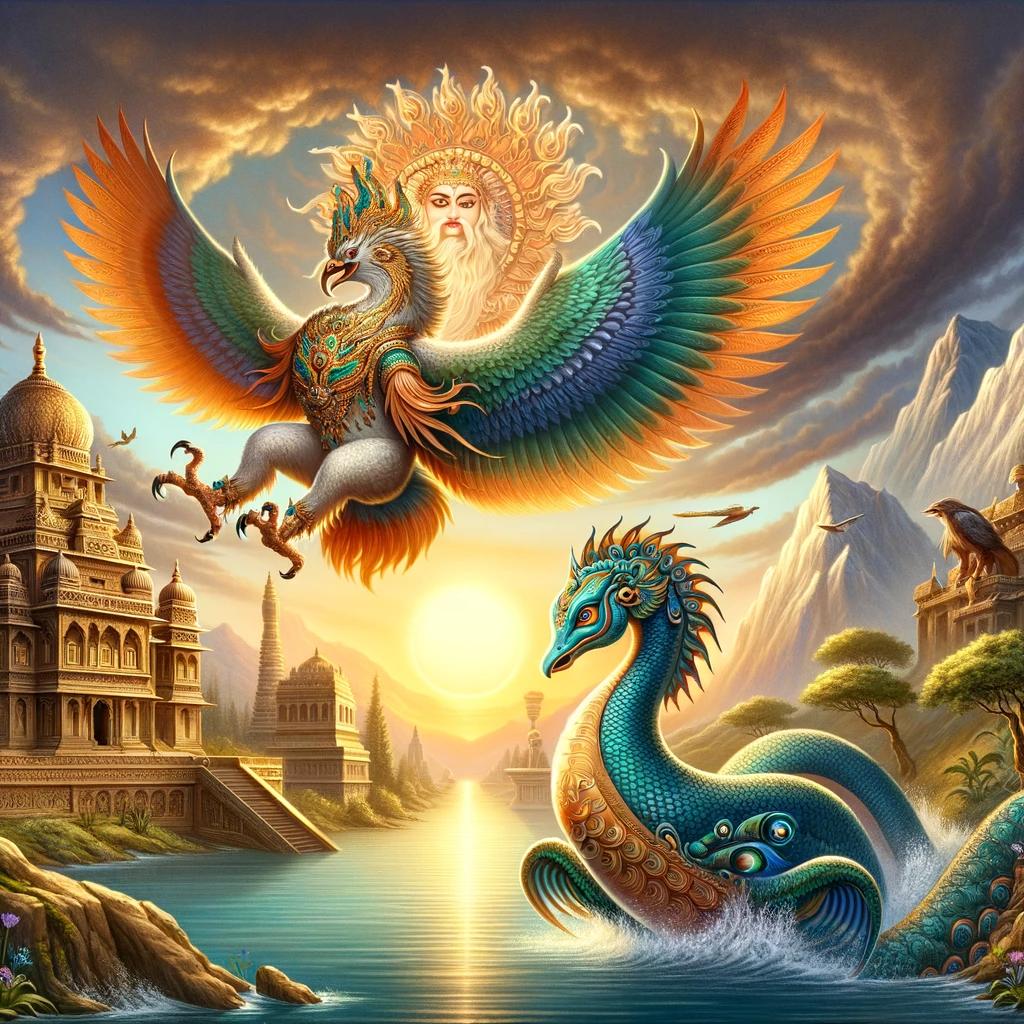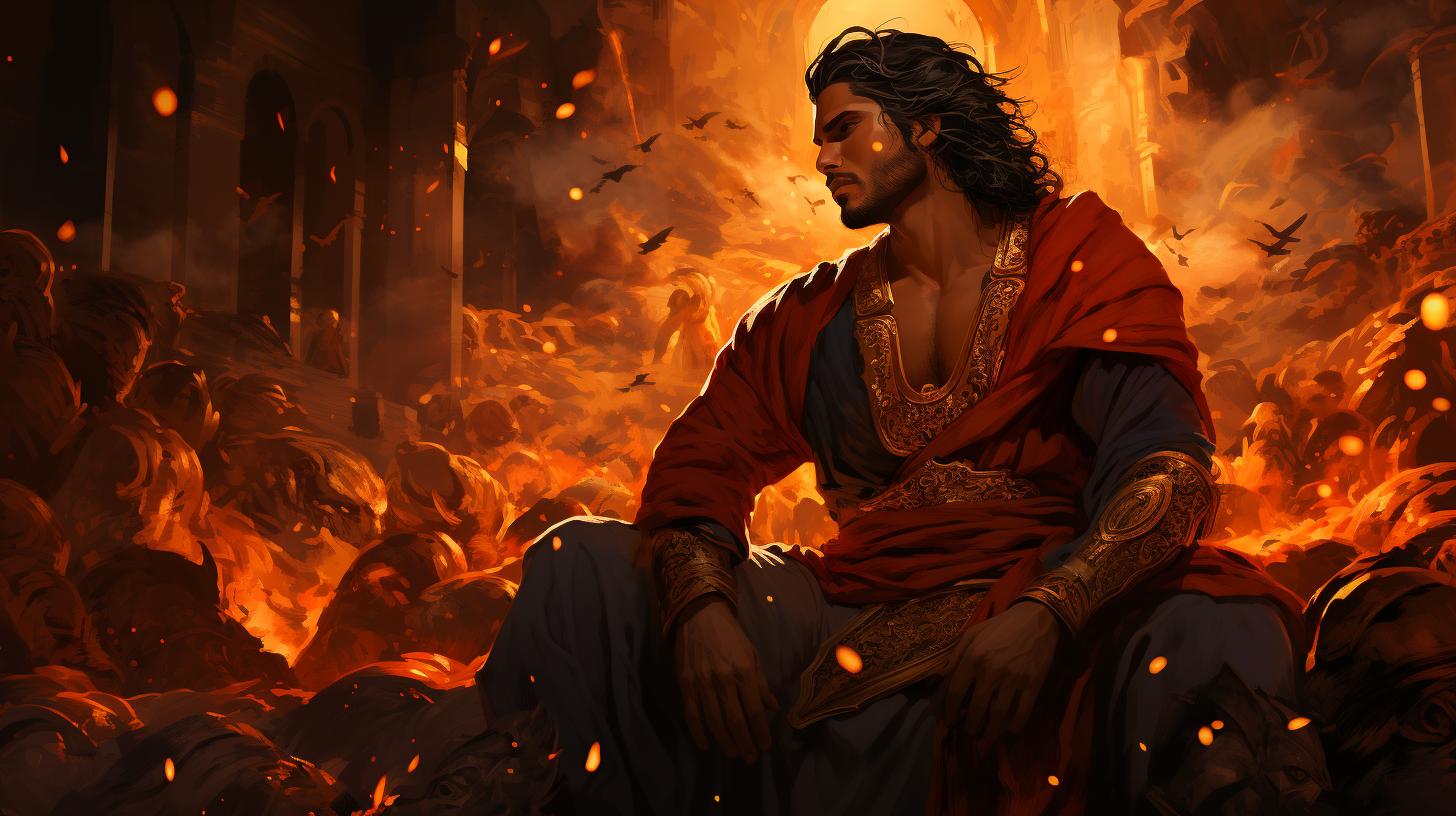Garuda Myth: The Majestic Symbolism and Power of the Sacred Bird
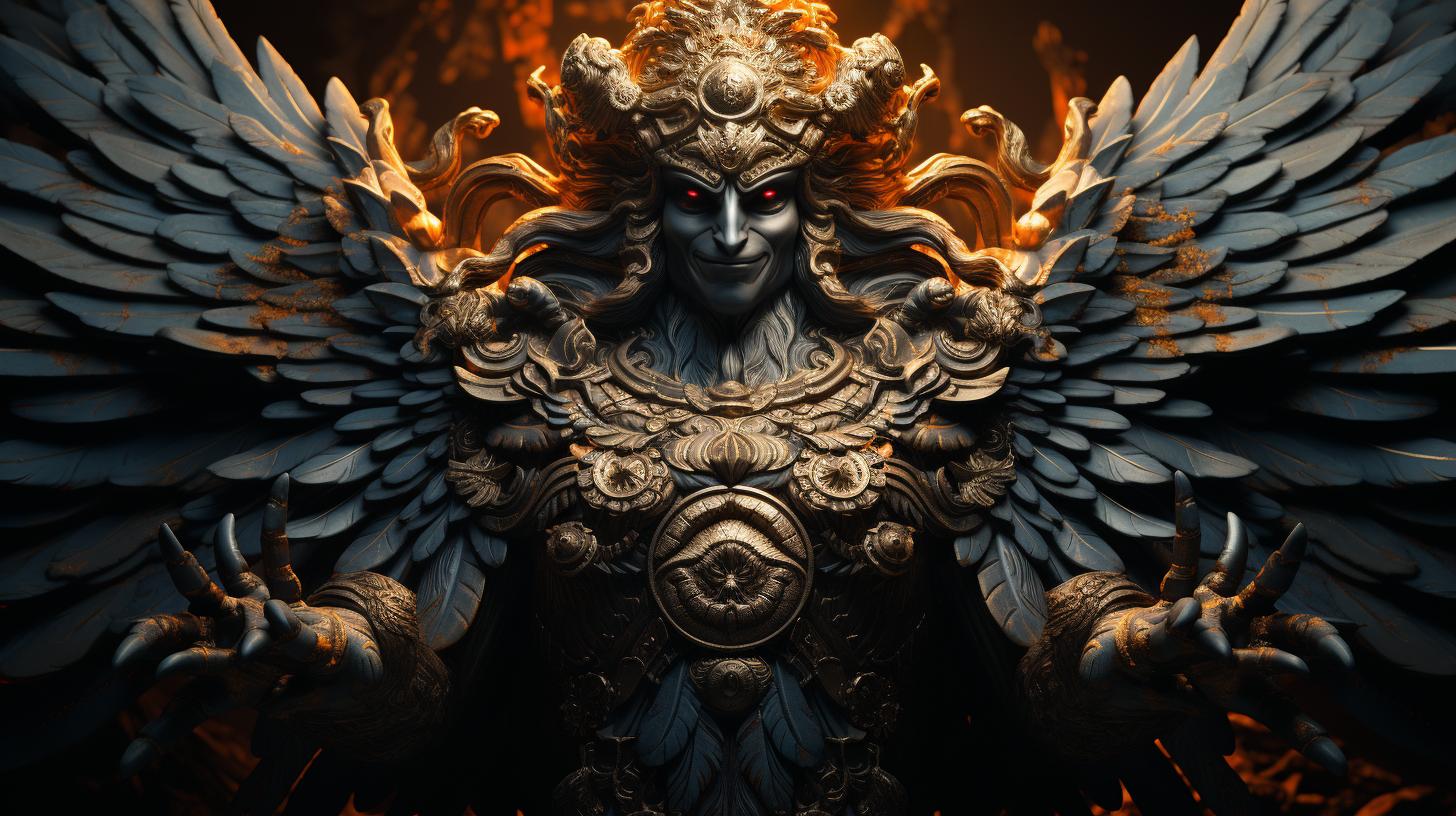
The Garuda myth holds significant importance in Hindu mythology, representing strength, power, and courage. Garuda, depicted as a majestic bird, is considered the mount of Lord Vishnu. In the famous story of Garuda and the Amrita, he battles demons to retrieve the divine nectar and emerges as a hero.
Furthermore, Garuda’s symbolism extends beyond mythology, as it is revered as a cultural and national symbol in countries like India, Indonesia, and Thailand. This sacred bird continues to be worshipped as a protector against evil, highlighting the universal themes of triumph over darkness and the preservation of the sacred.
Garuda Myth in Hindu Mythology
The Garuda myth holds a significant place in Hindu mythology, encompassing intriguing tales and profound symbolism. Garuda, described as a majestic bird resembling a kite or an eagle, plays a vital role in the stories of this ancient religion.
He is revered as the vehicle or mount of Lord Vishnu, the preserver and protector of the universe. Garuda’s image is associated with strength, power, and courage, while his ability to swiftly soar through the skies symbolizes freedom and liberation.
The Role of Garuda in Hindu Stories
In Hindu stories, Garuda’s presence is prominent, showcasing his bravery and valor. He is depicted as a divine being, a celestial creature entrusted with significant tasks. Whether it is obtaining the divine elixir or assisting gods in their battles against demons, Garuda exemplifies unwavering dedication and unwavering loyalty.
Symbolism of Garuda in Hinduism
Garuda embodies profound symbolism in Hinduism. As the mount of Lord Vishnu, he symbolizes the connection between the heavens and the earth. His towering presence and awe-inspiring form reflect the celestial nature of this mythical bird.
Furthermore, Garuda symbolizes the triumph of good over evil and the constant struggle against darkness.
Garuda as the Vehicle of Lord Vishnu
Garuda’s association with Lord Vishnu magnifies his significance in Hindu mythology. As the divine mount, he carries Lord Vishnu across the universe, representing the divine energy and cosmic power that sustains existence.
Garuda’s presence ensures the protection and preservation of the universe as Lord Vishnu oversees the cosmic order.
The Story of Garuda and the Nectar of Immortality
The story of Garuda and the nectar of immortality is a thrilling tale from Hindu mythology that highlights the bravery and heroism of Garuda, the majestic bird. In this epic quest, Garuda embarks on a mission to obtain the divine elixir known as Amrita, which grants immortality.
Garuda’s Quest for the Amrita
In his quest for the Amrita, Garuda faces numerous challenges and obstacles. The demons had acquired the Amrita and hidden it within a heavily guarded fortress. Undeterred by the dangers that lie ahead, Garuda sets out with determination to retrieve the nectar and fulfill his mission.
The Battle with Demons and Victory of Garuda
In a fierce battle against the demons, Garuda unleashes his incredible strength and courage. With his swift and strategic maneuvers, he defeats the demons and secures the precious Amrita. This victory showcases Garuda’s incredible power and his unwavering commitment to fulfill his purpose.
Garuda’s Reward and Ascension as Lord Vishnu’s Mount
Garuda’s triumphant return with the Amrita catches the attention of Lord Vishnu. Impressed by Garuda’s bravery and devotion, Lord Vishnu rewards him by making him his divine mount, bestowing upon him a position of great honor.
This union solidifies Garuda’s status as a hero and symbolizes his eternal connection with Lord Vishnu.
This captivating story of Garuda and the nectar of immortality serves as a reminder of the triumph of good over evil and the significance of unwavering determination.
Garuda’s unwavering commitment and heroism inspire individuals to face challenges and obstacles with courage, knowing that victory awaits those who persevere.
Garuda as a Cultural and National Symbol
Garuda, the mythical bird, holds immense cultural and national significance in various countries. It can be found in the emblems of India, Indonesia, and Thailand, representing their identity and heritage. The depiction of Garuda in these emblems signifies the connection between the mythical bird and the values cherished by these nations.
Garuda in Indian, Indonesian, and Thai Emblems
In India, Garuda is an integral part of the national emblem, known as the State Emblem of India. The emblem features a replica of the Lion Capital of Ashoka, with the mythical Garuda flanking on either side.
This symbolizes wisdom, courage, and strength, reflecting the qualities associated with Garuda in Hindu mythology.
Similarly, Indonesia also includes Garuda in its national emblem, known as the Garuda Pancasila. The emblem portrays Garuda with its wings spread wide, symbolizing freedom, power, and protection.
Garuda’s presence in the emblem signifies Indonesia’s commitment to national unity and progress.
In Thailand, Garuda holds a significant place in the royal emblem. The emblem, called the Garuda Emblem of Thailand or Phra Khrut Pha, features Garuda with a crown representing the monarchy.
The depiction of Garuda signifies sovereignty, dignity, and the close connection between the Thai royal family and the mythical bird.
Significance of Garuda in Indian Military Operations
Garuda also plays a vital role in the Indian military, specifically in the operations carried out by the Indian Air Force. The Indian Air Force’s special forces unit, known as the Garud Commando Force, is named after the mythical bird.
The Garud Commando Force is responsible for various special operations, including counter-terrorism, rescue missions, and airfield seizures, showcasing the valor and strength associated with Garuda.
Garuda as a Protector against Evil
In Hindu mythology and various cultures, Garuda is revered as a powerful protector against evil forces and negative energies.
The image of Garuda is often used as a talisman or amulet to ward off malevolent spirits and bring positivity and good fortune. This belief in Garuda’s protective abilities reinforces the spiritual significance and reverence towards the mythical bird.
Overall, Garuda’s representation in emblems and its associations with military operations and protection against evil make it an enduring cultural and national symbol. Its presence symbolizes the rich mythology and values revered by different countries, reinforcing the universal appeal and impact of Garuda as a mythical figure.
Garuda and the Rivalry with the Snakes
The legend of Garuda involves a longstanding rivalry with the snakes, particularly the Nagas. This rivalry stems from the captivity of Garuda’s mother by the Nagas, leading to a quest for liberation and an eternal enmity between the two.
The Captivity of Garuda’s Mother by the Nagas
In this part of the myth, Garuda’s mother is held captive by the Nagas, who play a complex role in Hindu mythology as both divine and malevolent beings. The Nagas, represented as serpent-like creatures, keep Garuda’s mother in captivity, igniting a deep desire within Garuda to secure her freedom.
Garuda’s Feat to Obtain the Elixir of Immortality
In order to free his mother, Garuda embarks on a perilous mission to retrieve the elixir of immortality, known as the Amrita. This mythical substance is believed to grant eternal life.
Garuda’s determination and strength are tested as he faces numerous obstacles in his quest to obtain the elixir, which is closely guarded by the gods.
The Lasting Enmity between Garuda and Snakes
After successfully acquiring the Amrita, Garuda secures his mother’s release.
However, the conflict between Garuda and the snakes persists, leading to a deep-seated enmity that endures through generations. This rivalry is symbolic of the eternal struggle between opposing forces and serves as a reminder of the ongoing battle between good and evil.
Garuda’s epic journey to free his mother and his subsequent rivalry with the snakes emphasize the themes of resilience, determination, and the eternal struggle between opposing forces. This captivating myth showcases the depth and complexity of Hindu mythology, highlighting the enduring significance of Garuda as a heroic figure.
Representation and Worship of Garuda
Garuda, the majestic bird of Hindu mythology, has been widely depicted in various forms of art and depicted on coins. These visual representations capture the essence of Garuda’s power and symbolism.
They showcase his emerald color, comet-like beak, round eyes, and golden wings. Often depicted with four arms and incorporating human-like features, such as wings and hawk-like traits, Garuda’s image is deeply ingrained in the minds of devotees of Lord Vishnu.
Visual Depictions of Garuda in Art and Coins
The visual representations of Garuda can be found in ancient coins from the Gupta period, serving as a testament to the widespread recognition of Garuda’s significance. These coins feature intricate designs, showcasing Garuda with Lord Vishnu mounted on his shoulders, symbolizing their divine connection.
These artistic interpretations serve as a visual reminder of Garuda’s heroic feats and embody the devotion of Vishnu’s followers.
Garuda’s Spread to Nepal and Southeast Asia
Garuda’s influence extends beyond India and has reached Nepal and Southeast Asia. In these regions, Garuda is frequently associated with royalty and considered a cultural symbol of great importance. The image of Garuda can be found in temples, palaces, and various artifacts, highlighting the widespread admiration and reverence for this sacred bird.
It serves as a testament to the transcendence of Garuda’s myth across borders and its integration into the fabric of diverse societies.
Garuda’s Association with Royalty and Cultural Significance
Garuda holds a special place in the hearts of the people in Nepal and Southeast Asia, where it is closely tied to the idea of royalty. The presence of Garuda in emblems and national symbols of countries like India, Indonesia, and Thailand underscores its immense cultural significance.
Garuda’s association with power, authority, and protection against evil solidifies its position as a revered mythological figure, reflecting the values and aspirations of the people in these regions.
Universal Themes and Values of Garuda Myth
Triumph of Good over Evil
The Garuda myth embodies the timeless theme of triumphing over evil.
In the story of Garuda and the Amrita, he battles demons to retrieve the divine nectar, symbolizing the victory of good forces over dark forces. This narrative highlights the enduring human belief in the ultimate victory of righteousness and the power of courage in overcoming adversity.
Courage and Strength as Portrayed by Garuda
Garuda epitomizes courage and strength, serving as an inspiring symbol for individuals facing challenges. His ability to swiftly fly anywhere represents the freedom and liberation that come with bravery. The story of Garuda’s heroic actions showcases the extraordinary power of determination and highlights the capacity within each person to overcome obstacles.
Preservation of the Sacred and Importance of Protection
Garuda’s role as a protector against evil emphasizes the significance of safeguarding what is sacred. His image is revered, and he is worshipped by many as a guardian against negative energies.
This aspect of the Garuda myth underscores the universal value of preserving that which is sacred, whether it be cultural heritage, personal beliefs, or the harmony of the natural world. It reminds us of the importance of actively protecting and cherishing what is truly meaningful to us.
.















